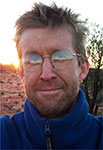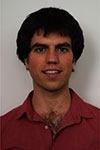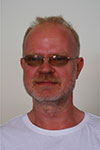Monitoring of hydraulic fracturing in Moomba, South Australia, using magnetotellurics
Simon Carter A , Graham Heinson A , Lars Krieger A , Nigel Rees A , Dennis Conway A , Oliver Putland A , Joseph Rugari A , Goran Boren A and Chris Matthews AThe University of Adelaide
The APPEA Journal 55(1) 149-162 https://doi.org/10.1071/AJ14011
Published: 2015
Abstract
The microseismic method is the dominant geophysical tool for monitoring hydraulic fracturing. High-pressure injection of fluids creates fractures in the sub-surface, recorded as small seismic events. Inverting such events yields the temporal and spatial extent of deformation; however, there is no straightforward relationship between the location of micro-deformations and the migration of injected fluid.
In this peer-reviewed paper, an alternative approach to deep-fluid monitoring using the magnetotelluric (MT) method is presented. As MT is primarily sensitive to the presence of fluids (through changes in the bulk electrical resistivity) and the orientation of fluid connection, this technique may yield important constraints on how fluids propagate from the well with time. This technique has been successfully used to monitor hydraulically induced fractures in two geothermal settings at depths of more than 3 km.
A 10-stage horizontal-well hydraulic-fracture in the Cooper Basin for a shale-gas reservoir was monitored using MT. From the central injecting well, four lines of instruments were placed radially in a cross-pattern. These new electric and magnetic loggers were deployed for a continuous monitoring period of 65 days. As changes in the magnetic field are spatially uniform across the extent of the survey area, only two magnetic-field data recorders were placed in the array. A third logger was placed 10 km from the well, for redundancy and as a remote reference.
Measurements were taken from mid-May to mid-July 2014, while the injection and drawback occurred for approximately one month. Processing regimes were created to convert field data into MT responses and resistivity models of the Earth. Theory, survey practice and outputs from this experiment are presented in this peer-reviewed paper.

Simon Carter completed a BMaths (Hons) and a PhD in applied mathematics at the University of Adelaide. He has done post-doctoral research with NICTA (National ICT Australia). He is a geophysics researcher at the University of Adelaide, specialising in magnetotellurics. |

Graham Heinson completed a BSc (Hons) at the University of Edinburgh and a PhD in geophysics at the Australian National University. He is Professor of Geophysics at the University of Adelaide and has more than twenty years of geophysical research experience in land and marine magnetotellurics. He has been Head of Geology and Geophysics at the University of Adelaide, a member of the National Committee for Earth Sciences, Australian Academy of Sciences and a member of a number of international working groups in geophysics. Member: ASEG, AGU, SEG and IAH. |

Lars Krieger completed degrees in mathematics and physics at the University of Freiburg, Germany, and a PhD in geophysics at the University of Hamburg, Germany. He has done post-doctoral research with the University of Adelaide and NICTA (National ICT Australia). He is a researcher in geophysics at the University of Adelaide, specialising in magnetotellurics. |

Nigel Rees completed a BSc (Hons) at The University of Adelaide in petroleum engineering, geology and geophysics and worked in the petroleum industry for three years. He is undertaking a PhD in geophysics at The University of Adelaide. Member: ASEG, AGU and SEG. |

Dennis Conway completed a BSc (Hons) at the University of Adelaide in geophysics. He is now undertaking a PhD degree in geophysics at The University of Adelaide. |

Oliver Putland completed a BSc (Hons) at the University of Adelaide in geophysics. |

Joseph Rugari completed a BSc (Hons) at the University of Adelaide in geophysics. |

Goran Boren completed a BSc (Hons) at Flinders University (Australia). He is a geophysics technician at the University of Adelaide. |

Chris Matthews completed a BSc (Hons) at the University of Adelaide and a PhD in geology and heat flow at Monash University. He is now a research officer and project manager with the SA Centre for Geothermal Energy Research (SACGER) at the University of Adelaide, and is also the Business Development Manager Geoscience for the Institute for Mineral and Energy Resources (IMER) at the university. He has around 15 years' experience in the minerals exploration and mining sector, natural resource management and geothermal exploration. |


